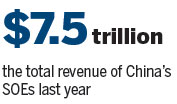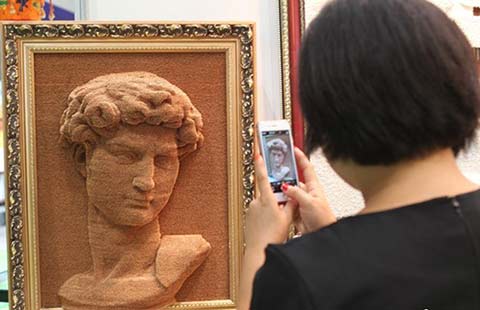New SOE guidelines clarify equity structure
By Lan Lan (China Daily) Updated: 2015-09-15 08:21China's biggest blueprint in two decades on the overhaul of State-owned enterprises has clarified principles for diversifying the equity structure of SOEs, which have total assets of more than $15 trillion.
The new guideline for SOE reform, which was unveiled on Sunday, classifies the SOEs into two groups for the first time: those for public service and those that are profit-oriented.
In principle, all profit-oriented SOEs should seek to channel more investment from private investors or other State-owned capital to realize equity diversification, said Lian Weiliang, vice-chairman of the National Development and Reform Commission, at a news conference in Beijing on Monday.
As a result, State-owned capital could hold a controlling share of equity or less. The guideline also says that all SOEs in this group should introduce corporate and shareholding systems and make full use of public listing.
Zhou Fangsheng, deputy director of the China Enterprise Reform and Development Society, said the guideline is a significant step because it draws a clear line for the reform of profit-oriented companies' ownership.
"It specifies that the market-oriented companies will have an open equity structure," Zhou said. "There are no limitations, and each company could outline its own strategy. Diversification is always better than sole equity structure."

The guideline is a continuation of the country's SOE reforms of the 1990s. The process in further diversifying the SOEs' equity structure has been sluggish since then, said experts.
Industries that seek to attract private investment include energy, such as oil, gas and electricity; transportation, such as railways; telecommunications; resource development; and public services.
Private companies are encouraged to participate in SOE reform and reorganization through various ways including share acquisition, purchase of convertible bonds and equity replacement, said Lian of the NDRC.
For market-oriented companies that are key to national security, State-owned capital should keep a controlling status, while private investors will be encouraged to participate.
Meanwhile, nonprofit companies should mainly take the form of being solely owned by State capital, and qualified non-SOEs will be encouraged to participate.
"A thorny point is that some SOEs hold both nonprofit and for-profit assets, and it would be a very complicated and challenging task to divide these assets and then reintegrate them in a bigger scope," said Zhou.
It's important to specify that the two types of enterprises should not invest and operate in an overlapping manner after the classification is completed, he said.
Zhang Xiwu, deputy head of the State Council's State-owned Assets Supervision and Administration Commission, told the news conference on Monday that the main purpose of promoting SOE reform is to improve the efficiency of SOEs and make them independent market players.

The primary goal of the reform is to achieve decisive progress in major areas of SOE reform by 2020, he said.
SOEs are vital to China's economy. Revenue of China's SOEs totaled 48.06 trillion yuan ($7.5 trillion) last year, and total profit was $2.48 trillion, while the overall assets of SOEs have surpassed $15.7 trillion.
lanlan@chinadaily.com.cn
- 'Silver' tourists may become goldmine for travel agencies
- Convicted criminals on death row to get free legal aid
- SOEs take measures to reduce graft
- Beijing-Tianjin-Hebei deal to promote landscape tourism in area
- New rail to speed up travel along Yangtze River
- China checks nuclear facilities after Tianjin blasts
- Mainland, Taiwan to improve cross-Straits banking cooperation
- PM 2.5 density down 17.4% in 161 Chinese cities during H1
- Universal signs deal to open biggest theme park in Beijing
- Public to have more say on pollution







